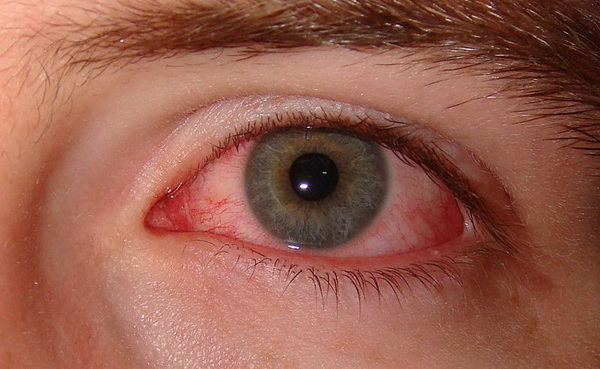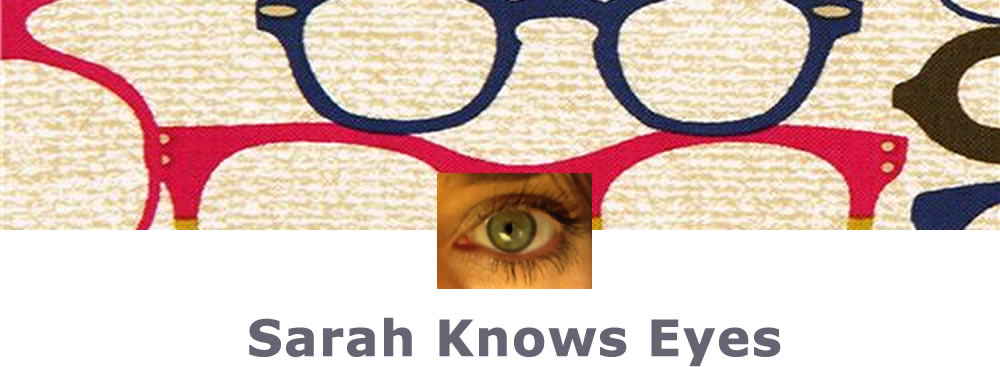“Dry eye syndrome, or dry eye disease, is a common condition that occurs when the eyes do not make enough tears or the tears evaporate too quickly. This leads to the eyes drying out and becoming inflamed (red and swollen) and irritated. Dry eye syndrome is also known as keratoconjunctivitis sicca, or simply 'dry eyes'.” /via www.nhs.uk.

20 years ago “Dry Eye” was a rarity. Fast forward to the present day and it seems every other patient walking in to the practice is suffering, of all ages. So what’s changed? In the modern, technology-reliant (obsessed) era, from central heating to air-conditioning we are continuously drying out our environment. A lot of us spend a significant portion of time (2-3 hours+) at computer screens, and are becoming increasingly attached (addicted) to our mobile phones, tablets, e-readers, etc. Most people don’t realise, when looking at these screens we become somewhat fixated – we forget the magical 20:20:20 rule (more on this in a later blog post “coming soon”), our blink rate drops and our tear film breaks down. The tear film is incredibly important, it not only forms part of your prescription – hence you actually won’t see as well if your eyes are dry – but it also protects the front of eye (the cornea and conjunctiva) from the sweeping movement of the eyelid (which can literally feel like sandpaper on a dry eye!).
There are varying degrees of Dry Eye, from the feeling of mild discomfort/irritation, to those poor chronic sufferers who require “punctal plugs” – where tiny little plugs are used to block the tear ducts in order to prevent tears from draining away (seriously, DON’T Google it! It’s gross!!).
How do you know if you’re suffering from Dry Eye? Well, are you experiencing any of the following symptoms: -
- Dryness
- Burning, stinging or itching
- ‘Gritty’ feeling
- Irritation from wind or smoke
- Blurred or smeary vision
- Tired eyes
- Excessive watering
- Photophobia (sensitivity to light)
- Contact lens discomfort
People are always amazed when they tell me that their eyes water all the time and I reply, “yes you’ve got dry eyes”, it seems such a contradiction. An insufficient tear film can result in dry patches on the cornea and conjunctiva, which the eye tries to correct with a flood of watery tears. The trouble is, these tears are formed so quickly that they lose some of their potency and are flushed away too quickly - they are therefore incapable of doing the job for which they are intended.
For more information about the causes of Dry Eye, click here. In this blog however, I will be focussing on what you can do to ease the symptoms if you have got dry eyes.
So what can you do?
A “Dry Eye regime” needs to be worked in to your daily routine. The sooner you can do this, the quicker it won’t feel like a chore, just a natural part of your day, like taking a shower or brushing your teeth. This is what I recommend to my patients (on what seems to be a daily basis now!), based solely on my own experience in practice, but treatment can (and should) be tailored to suit your individual needs. If you would like any further information, please do not hesitate to contact me, or speak to your GP, Pharmacist, Optometrist or Dispensing Optician.
1. Hot compress & lid hygiene/massage
Firstly, a “hot compress” works wonders, trust me! This can be as simple as a hot (not boiling!), wet flannel placed over closed eyes for 5-10 minutes. Like a mini sauna for your eyes the heat will open up blocked pores and loosen any crusty bits that might be blocking the tear ducts or lash follicles.The thing with a hot flannel is that it cools very quickly and may need rewetting 2-3 times in a session, there are however special packs on the market that can be heated in a microwave and retain heat much more efficiently. (Some can be used hot OR cold, which is brilliant for migraine sufferers!) Ideally, you want to be doing this twice a day, morning and evening. I know, this sounds like a big effort, but I cannot stress how much of a difference this can make to dry, tired, irritated eyes.

/via michaelduplessie.com
Together with a hot compress, and particularly if you suffer from Blepharitis, you should incorporate “lid massage” in to your daily routine. Down on the upper lids, up on the lower lids – gently though, the skin in this area is very delicate! Lid massage is easily combined with lid hygiene – the cleaning of the lids – to remove any dead skin or crusty bits. There are several solutions out there for this very purpose: you can buy pre-soaked wipes, or bottles of solution that can be used with cotton wool pads.
SarahKnowsEyes TOP TIP: Wet the cotton wool pad with warm water before use, squeezing out as much liquid as possible before applying the solution! The (sometimes costly) solution will last longer, as a dry cotton wool pad will absorb a lot more than is required.
2. Lubricating drops
If you only add one thing to your daily routine, make it lubricating drops – the most effective and possibly most important treatment in the fight against Dry Eye. There is a huge array of products on sale out there, from a simple Hypromellose, available for a couple of pounds at any Pharmacy; to more potent ones that are available over the counter and/or on prescription. There are even sprays that you can use on closed lids if you don’t like putting drops in your eyes. (These are successful up to a point, but it’s much better if you can actually get the damn things in your eye!)
SarahKnowsEyes FUN FACT: Men are notoriously worse at putting drops in their eyes than women, I think it’s because we’re used to putting on eye make-up. Tried to put drops in my Dad’s eyes once, it looked something like this…

Depending on the extent of the problem, you might be wise to invest in a slightly more expensive, more powerful preparation, which actually tend to be more cost effective in the long run, as you will use less. I always recommend using these drops a minimum of 3 times a day, but anywhere up to 5-6 times a day if you’re having a “flare-up”! Basically you can’t overdo it – so get those peepers lubricated!!
3. Protection at night
Some Dry Eye sufferers will experience dry, irritated or sore eyes on waking, possibly with some crusty “sleepy dust”. During rapid eye movement (REM) sleep, our eyes can dry out very quickly and being asleep, it’s difficult to put your drops in. A “thicker” gel-type substance can prove effective – put in before you go to sleep, it can “fog” your vision a little bit at first, but because it’s thicker it will linger for longer, keeping the eyes lubricated and protected throughout the night.
I know, I know, this all sounds like a right ol’ palaver, but if you’re suffering with Dry Eye this is genuinely the only way to deal with it! What’s more, unfortunately if you are prone to Dry Eye it will never go away completely, and you will almost certainly experience “flare-ups” dependent upon the severity and/or cause of your Dry Eye. For instance, is it worse during Hayfever season? After a long car journey? When you’re particularly tired? Or in the depths of a cold winter? The good news is that you can all but completely alleviate the symptoms with the correct treatment, which can be increased or decreased as necessary – you may only need to do one of these steps – but, if you stop treatment altogether, it will come back! As they say “the proof is in the pudding” and this regime is tried and tested!

